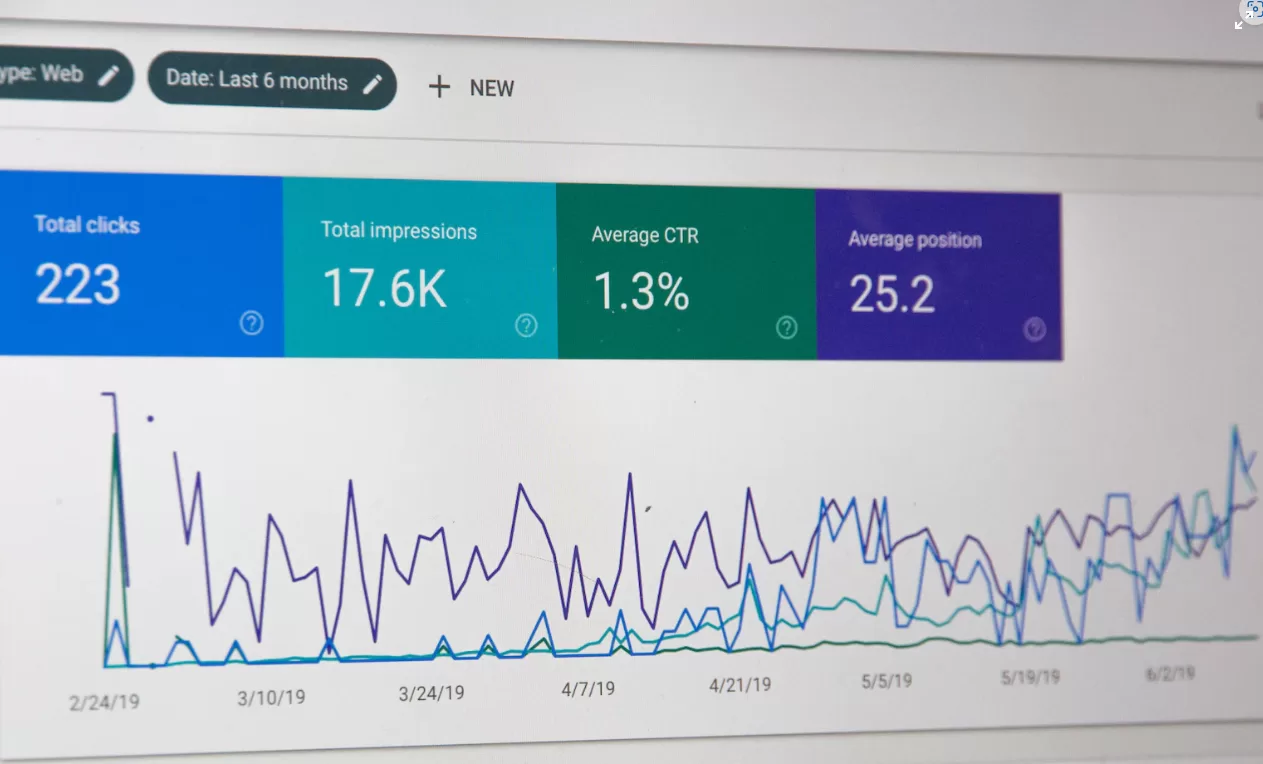Do you feel like your marketing spend isn’t delivering the ROI or results you’re expecting? If so, it might be time to implement predictive analytics. In marketing, predictive analytics helps determine the path your customers are likely to take given their prior interactions with your business.
In this article, we discuss the ins and outs of using predictive analytics in digital marketing.
What Is Predictive Analytics in Marketing?

So what is predictive analytics in marketing, and why is it so important?
Think of predictive analytics in digital marketing as a crystal ball that shows the future. However, instead of listening to a charlatan fortune teller tell you what’s to come, predictive analytics relies on a combination of historical data, machine learning, and statistical modeling to arrive at an outcome.
Predictive analytics is a potent tool that can bring big results when appropriately implemented. After all, what marketer wouldn’t want to know how their customers might react to an ad or which email subject line is most likely to result in the highest open rates?
When you harness the power of predictive analytics in marketing, you can optimize your strategies to meet your customer’s needs. And when your clients perceive that you can fulfill their needs, they’re more likely to turn to you than your competitors.
The Benefits of Predictive Analytics in Digital Marketing
There are multiple advantages to using predictive analytics in marketing. Here are a few you can look forward to.
Enhanced Decision-Making
In the past, marketers stood by tried-and-true methods of reaching their customers: running commercials, buying PPC ads, sending emails, and building a social media following.
While none of these advertising methods are going away, they can result in bloated marketing spend that doesn’t truly connect with your audience — especially if they don’t incorporate predictive analytics.
Predictive analytics allows you to identify trends among your target audience and use them to make informed marketing decisions based on data. Instead of trying to guess how your audience will react to your digital marketing strategies, you’ll rely on proven statistics for your next marketing move.
Improved Targeting
Some companies find it difficult to identify their core audience base. And others may know who their audience is but fail to identify specific vital characteristics that their clients share that make them more likely to make a purchase.
When you incorporate predictive analytics in marketing, you can discover trends you never knew existed among your clients. Those trends will make it easier to target future customers who need your services.
Once you learn more about your audience, you can create ads that speak to their needs. You’ll in turn see more engagement from clients and potential customers, which leads to more sales.
Personalized Customer Experiences

Gone are the days when personalizing an email was as simple as inserting a customer’s name automatically into your message. These days, consumers expect much more from marketers. They want to receive content that they want to read, not an obvious email blast that doesn’t resonate at all.
Similarly, clients will promptly scroll past a social media ad that doesn’t reflect their interests, and they’ll change the channel when commercials appear on the TV. Ads are so ingrained in our society that many consumers are entirely immune to them. Your ad must therefore be compelling enough to capture their interests to bring actual returns.
Using predictive analytics in marketing allows you to customize your deliverables to suit your audience. You can use the data from predictive analytics to segment your emails and provide a memorable ad experience for your clients.
Optimized Campaign Performance
No company can afford to spend thousands of dollars on marketing only to see no return for their efforts. However, many businesses do exactly that. They end up closing shop not because they didn’t have a solid product but because they failed to optimize their campaigns to reach their true audience.
If your marketing campaigns have a low ROI, you definitely need to incorporate predictive analytics. A low ROI means you’re spending money on strategies that aren’t working for you. If you continue down that same path, you’ll slowly run out of money, which can spell trouble for your organization’s future.
With predictive analytics, you can quickly identify what’s working and what’s not. Based on the recommendations you receive, you can better allocate your spending toward strategies that deliver the returns you’re looking for.
Real World Use Cases for Predictive Analytics in Marketing
Let’s look at a few ways to implement predictive analytics into your marketing strategies.
Segment Your Customer Base
Understanding the characteristics of your audience is critical for making sales. If you don’t know who your clients are, you’ll find it very challenging to tailor your marketing campaigns to fit their needs.
With predictive analytics, you can easily segregate your customers into groups according to demographic factors like age, income level, and education. You can also separate them based on their engagement with your company and their buying behaviors.
In the past, marketers performed customer segmentation manually, and they didn’t have nearly the amount of data available today. The process becomes automatic with predictive analytics, and you can complete it nearly instantaneously.
You can then use your newly segmented customer base to target potential customers through social media platforms like Facebook and Instagram. It’s also possible to implement your segmentation strategy into emails, providing a more tailored experience for subscribers and leading to more engagement and higher open rates.
Provide Specific Recommendations
E-commerce businesses can benefit from predictive analytics, particularly if they have vast inventories. Instead of showcasing your top-selling products on the front of your website, you can display the items most likely to interest the visitor.
As an example, consider Amazon. When you log into your Amazon account, you’ll see a list of recommended products based on your prior browsing history and purchases. Those recommendations are curated using predictive analytics. You can provide the same tailored experience through your personal e-commerce website.
Tailored recommendations are also common through streaming sites like Spotify and Netflix. For instance, Spotify will use your listening history to recommend playlists. And based on what you previously watched, Netflix lists TV shows and movies likely to appeal to you.
Prioritize Your Leads
Not every customer lead is a good one. Distinguishing between a solid lead and a questionable one ensures you spend your marketing money on good prospects — not ones that won’t go anywhere. Focusing on solid leads strengthens your relationships with customers, helping you to move them through the purchasing journey in an organic way.
For instance, a B2B organization could use predictive analytics to separate potential clients into hot, lukewarm, and cold leads. The company could then make a stronger sales pitch to the hot leads through phone calls, free trial opportunities, or demonstrations.
At the same time, they could maintain brand awareness among lukewarm leads by sending occasional emails or content that could move the lead into the hot category.
Predict Waves of Consumer Demand

One of the primary risks of retail is buying inventory that doesn’t sell. When your customers don’t want what you have to offer, you’ll lose money on items in your store or warehouse.
With predictive analytics, it’s easier to identify your top sellers and ensure they’re in stock for buyers. Similarly, you can boost your marketing activities during expected buying periods and lower them when your audience is less likely to purchase them.
Predicting consumer buying patterns isn’t only good for retailers. It’s also appropriate for service-oriented companies, especially subscription-based organizations that experience churn.
Suppose that you see the signs that a customer is likely to end their subscription soon. In such a case, you can act proactively to keep them on board with the help of predictive analytics.
Incorporate Predictive Analytics to Improve Your Marketing ROI
Predictive analytics makes attracting and retaining a solid customer base much more manageable. You can optimize your marketing efforts to achieve a strong ROI on your advertising budget — an essential task for any company, whether they’re well-established or still in the start-up stage.
Implementing predictive analytics in marketing isn’t difficult, and there are many ways to incorporate it into your advertising strategies. To get started, identify where your campaigns could use the most help and use predictive analytics to recommend the best courses of action. You’ll likely find that your new strategies provide better results than your uninformed techniques.

